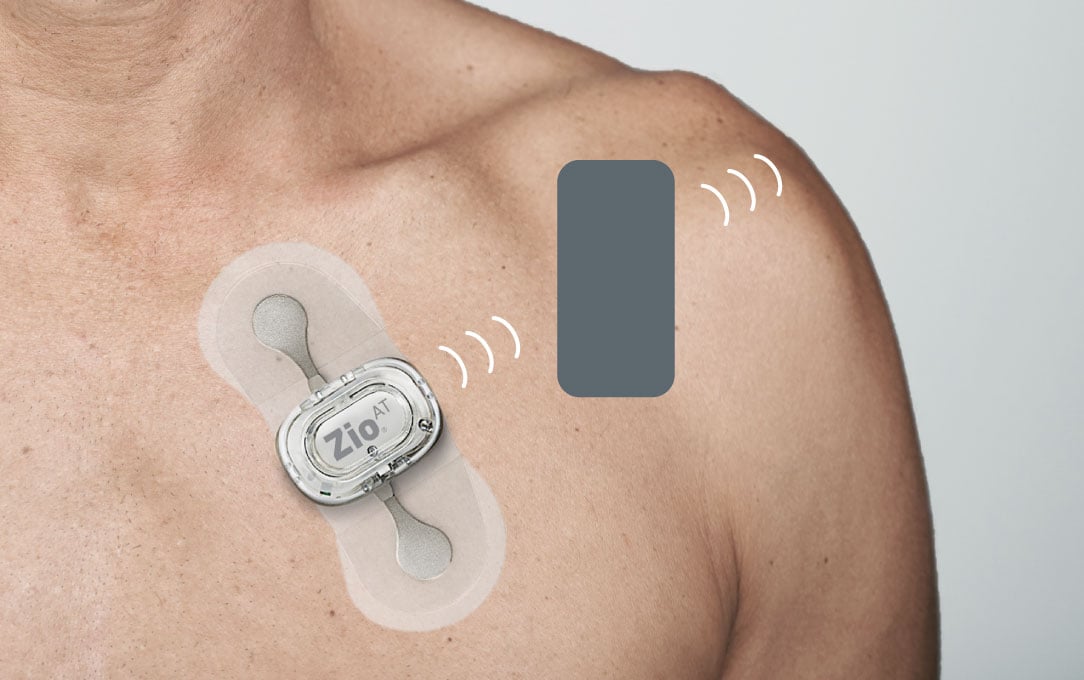Mobile Cardiac Outpatient Telemetry Patch System. You can wear the Zio monitor a small discreet comfortable patch during your normal day-to-day activity including while you sleep shower and exercise while it records every single heartbeat.
The ZIO Patch is a new form of ambulatory cardiac monitoring described as a wearable patch.

30 day heart monitor patch. BioTel Hearts MCOT Patch is a convenient heart monitor that detects and transmits abnormal heart rhythms wirelessly. In this video I share my experience wearing a heart monitor for 14 days. You can carry or wear a cardiac event monitor up to 30 days.
A Holter heart monitor is a device that is used to record your hearts activity. Your doctor may recommend an event monitor when symptoms are infrequent less than daily. Event Monitor including External Loop Recorder.
MCOT is proven to be nearly five times better at diagnosing post-stroke AF than alternative devices after 21 days of monitoring. Newer patch -type devices record for longer periods of time. Recording can be patient -activated.
But abnormal heart rhythms and cardiac symptoms may come and go. It is activated by the patient when he or she is experiencing symptoms such as dizziness palpitations shortness of breath fainting spells or chest pain to help diagnosis what is causing the symptoms. An event monitor is for long-term monitoring up to 30 days.
A Holter monitor is for short-term monitoring usually 24-48 hours. After the exchange of a few emails my doctor ordered an at-home 30-day heart monitor. Although the monitor will transmit cardiac data automatically to BioTel Heart 24 hours a day it is important for you to record symptoms as you feel them.
Continuous means that it records your heartbeats the whole time youre wearing it. Comparison of two ambulatory patch ECG monitors. They work only when a person turns on the device.
The MCOT monitor gathers data from the sensor via Bluetooth then sends that ECG data via a wireless connection automatically. Thirty Day Event Monitor. You may have to wear it for any amount of time spanning from 24 hours to 30 days depending on your condition and what your doctor is checking.
The benefit of the P- wave and signal clarity. An event monitor may be ordered by a cardiologist when the patient experiences symptoms infrequently or may not feel any symptoms at all. You carry the device in your hand wear on your wrist or keep it in your pocket.
If you are prescribed an event or mobile cardiac telemetry monitor it is worn for a longer term typically 30 days. Even though the device is worn for a. A three-inch patch worn continuously for two weeks the Zio is set to displace Holter monitors almost completely said JPMorgan analyst Mike Weinstein.
Cardiac event monitoring is used to record a patients heart rhythm when he or she is experiencing symptoms. If you are undergoing a heart health check your doctor or cardiologist might have fitted you with a heart monitor also called a Holter monitor cardiac event monitor or ambulatory ECG monitor. MCOT is the only cardiac monitor proven to detect AF 30 seconds with 100 sensitivity and 100 positive predictivity.
Your doctor will place it on the skin of your chest. The test is done with a monitor that is an adhesive patch. ¹ Smith WM et al.
The area of skin where the electrodes will be attached will be cleaned with alcohol before the sensors are attached. A continuous heart monitor is a small device that you wear. ² Rho R et al.
The ZIO Patch weighs just a few ounces that is a peel and stick device that is worn for an extended monitoring period of up to 14 days. Your doctor will be expecting you to wear it for several days or even a week while continuing with your daily life and you might wonder what exactly you can and cannot do while wearing it. The FDA has cleared the Zio system to monitor for many different kinds of irregular heart rhythms.
It records the electrical activity of your heart. In a study physicians were able to reach a diagnosis 90 of the time with the Zio system 1. But your doctor will determine the specific length of time you should wear the monitor.
Theyre still using a. Holter Monitor. Comparison of diagnostic value using a small single channel P-wave centric sternal ECG monitoring patch with a standard 3-lead Holter system over 24 hours.
Its critical that you follow your doctors orders and wear the monitor day and night for the full number of days your doctor prescribed. The main purpose of an event monitor is to record your heart rate and rhythm during a symptom event. Read on if.
Electrodes on my chest fed my hearts rhythm over wires to a. You may be asked to wear a cardiac event recorder if you have fast slow. The ZIO Patch is unique compared to traditional Holter monitors as the monitoring device has no leads no wires and no batteries.
For instance heartbeats that are too. Event monitors can be worn for weeks or until symptoms occur. This is something my doctor and I agreed to do in order to help deter.
Portable device that records and stores heart rhythms contni uously for 14 -30 days or longer. Its a marvel of modern technology. The device will give your doctor the same kind of information as an electrocardiogram.
By doing so throughout your monitoring period this will. Portable device that records heart rhythms continuousyl for up to 72 hours.

